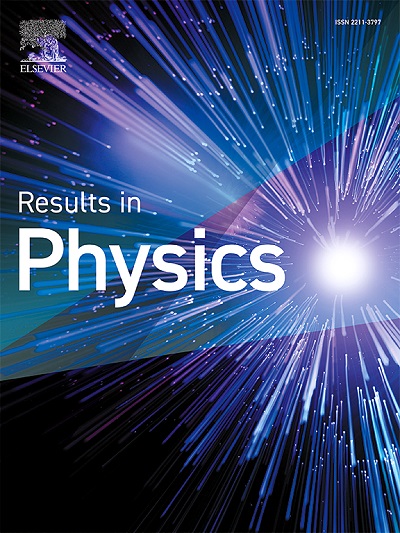Optimization of WS2 layer thickness for enhanced performance in self-powered gas sensors
IF 4.4
2区 物理与天体物理
Q2 MATERIALS SCIENCE, MULTIDISCIPLINARY
引用次数: 0
Abstract
The WS2 thin films were deposited on glass substrates using RF magnetron sputtering using a tungsten sulfide target to study the effect of WS2 layer thickness on the properties of the thin films. To analyze the morphological, structural, optical, electrical, and gas sensor characteristics of the thin films. The FESEM images indicated that samples have nanoparticles with 50, 150, and 250 nm thicknesses. The 50 and 250 nm and the sample of 150 nm have preferred orientations of (104) and (009), respectively. The 150 nm sample has a larger crystallite size than the other two samples and, as a result, has better crystallinity. Additionally, the Urbach energy calculation showed that the 150 nm sample had the lowest Urbach energy (74 meV), confirming better crystallinity and fewer crystal defects. The indirect band gap of the samples with increasing thickness is 1.89, 1.35, and 1.55 eV, respectively, which indicates that the 150 nm sample has the closest band gap value to the bulk state. Among the samples, the sample of 150 nm, which has better crystallinity and fewer crystal defects, has responded to the gas sensing of ethanol and ammonia in the self-powered mode. Measurements were performed at 500, 1500, and 2000 ppm and the recovery time for ethanol gas was 41.28 s.
求助全文
约1分钟内获得全文
求助全文
来源期刊

Results in Physics
MATERIALS SCIENCE, MULTIDISCIPLINARYPHYSIC-PHYSICS, MULTIDISCIPLINARY
CiteScore
8.70
自引率
9.40%
发文量
754
审稿时长
50 days
期刊介绍:
Results in Physics is an open access journal offering authors the opportunity to publish in all fundamental and interdisciplinary areas of physics, materials science, and applied physics. Papers of a theoretical, computational, and experimental nature are all welcome. Results in Physics accepts papers that are scientifically sound, technically correct and provide valuable new knowledge to the physics community. Topics such as three-dimensional flow and magnetohydrodynamics are not within the scope of Results in Physics.
Results in Physics welcomes three types of papers:
1. Full research papers
2. Microarticles: very short papers, no longer than two pages. They may consist of a single, but well-described piece of information, such as:
- Data and/or a plot plus a description
- Description of a new method or instrumentation
- Negative results
- Concept or design study
3. Letters to the Editor: Letters discussing a recent article published in Results in Physics are welcome. These are objective, constructive, or educational critiques of papers published in Results in Physics. Accepted letters will be sent to the author of the original paper for a response. Each letter and response is published together. Letters should be received within 8 weeks of the article''s publication. They should not exceed 750 words of text and 10 references.
 求助内容:
求助内容: 应助结果提醒方式:
应助结果提醒方式:


